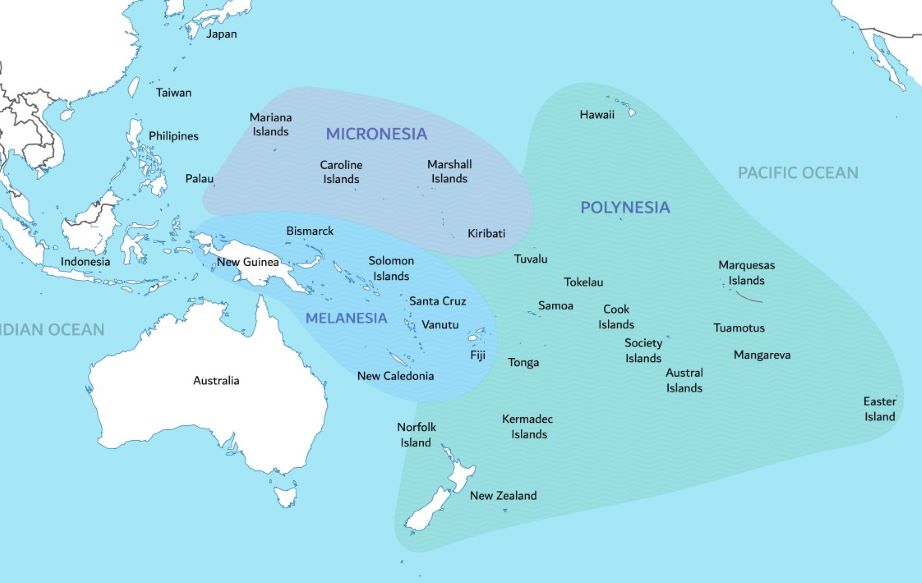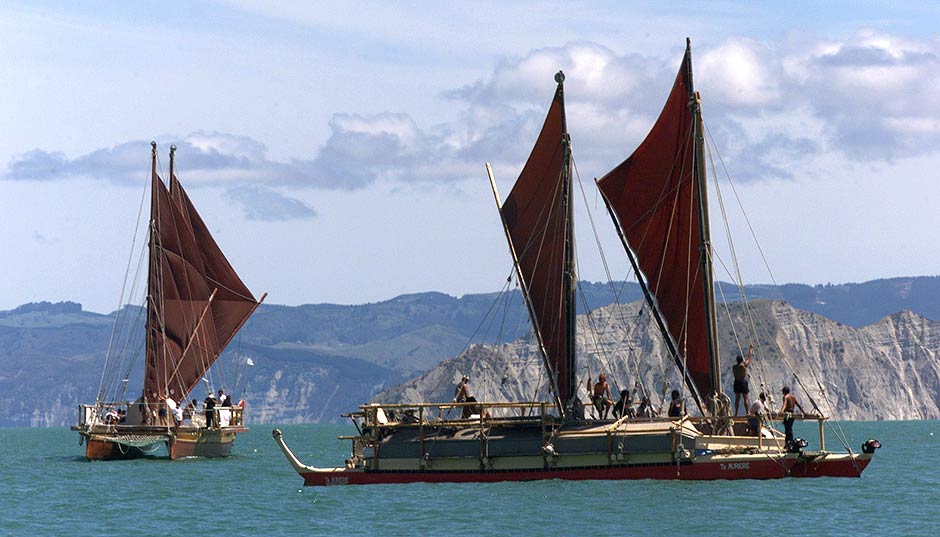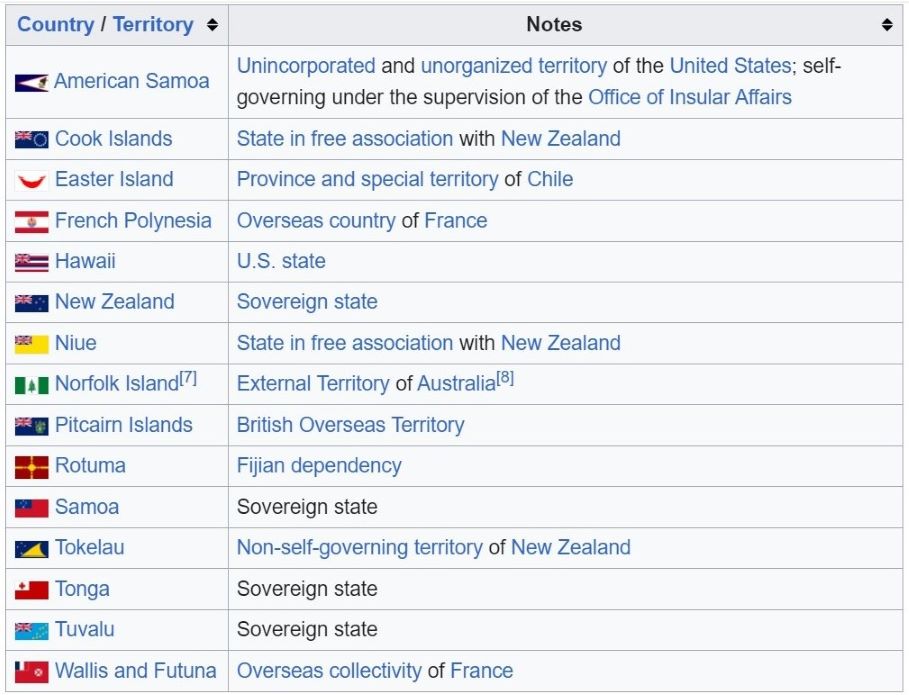Polynesians sailed to South America long before European colonists
The ancestors of Polynesians are believed to take their roots from northern Philippines, Taiwan and possibly southeastern China coastline, based on available linguistic, genetic and archeological data.
Representing a society known as the Lapita Culture, which appeared between 1600 and 500 B.C., they were expert sailors and traveled long distances to settle on hundreds of islands in the Pacific Ocean, mixing with the few locals and establishing prosperous communities from Hawaii in the north to Easter Island in southeast to New Zealand in southwest.
More to read:
How the Muscovites betrayed the Ukrainian Cossacks to create the Russian Empire
At least two studies suggest that Polynesian voyagers crossed the ocean and reached South America, and possibly North America too, long before the European explorers did in the 15th century – approximately the same time the Vikings reached the “new world” in the northern hemisphere: 800 years ago.
Research in the Science Advances documents an extensive migration of Polynesians across at least 10 million square miles beginning the year 900 or 950 A.D. They quickly discovered what are today known as the Cook Islands, Society Islands (including Tahiti), Marquesas Islands, Solomon Islands, Tonga, Samoa, Vanuatu, New Caledonia, Fiji, and the Hawaiian archipelago.

The Oceania.
By 1250 or so, they mapped more than 1,000 islands and put their foot in New Zealand.
Another research, published in the journal Nature, holds that there had been contacts between ancient Polynesian and Native American populations, with authors pointing to Native American genes in Polynesian descendants and traces of American crops such as bottle gourd and sweet potato [which don’t stay afloat for a long time, if you are curious] in the Polynesian archeological record.
The scientists analyzed genome-wide variation in individuals from islands across Polynesia for signs of Native American admixture, from 807 individuals inhabiting 17 island populations and from 15 Pacific coast Native American groups.
This work made possible to estimate the year of interbreeding: around 1200 A.D.
This is almost 300 years before Christopher Columbus visited the North American continent.
Polynesian were first to leave chickens in South America while adopting sweet potato for cultivation instead, fossilized bones and seed demonstrate.
How did they get there?
One of the most intriguing questions is how did the Polynesians manage to cross vast swaths of the Pacific Oceans without a compass or any other nautical instruments? Nor are there any records of them being in possession of large and strong vessels to battle with nature.
The Polynesians didn’t even have a system of writing to record their accomplishments, passing down all the stories orally, some of which would recall, for example, how Hawaiian settlers came from Tahiti, more than 2,500 miles away.
First of all, they were incredibly skilled navigators, who were capable of reading the stars, waves, currents, clouds, seaweed clumps and seabird flights.
Secondly, in the Lapita Culture, gods and the ancestors who passed away resided in the east, where the Sun rises. Therefore, sailing east was a natural call and trending especially among young voyagers.

Polymesian catamarans nowadays [reconstruction].
The great wave of Polynesian expansion took a long pause until the 9th century B.C. Researchers note that island chains are much further apart beyond Tonga and Samoa, separated in some cases by thousands of miles of open ocean. The winds and currents, on the other hand, generally conspire against sailing east, and the small boats were simply not up to the task, History.com quoted a researcher as explaining what preceded the next stage.
On Tonga and Samoa, a distinct, more advanced Polynesian culture evolved. This is the place where double-hulled canoes were invented – the predecessors of modern catamarans – bigger, stronger and faster than the earlier vessels. These 15-20-meter long boats could carry two dozen settlers each, along with their pets and livestock (dogs, pigs, chicken) and crops.
More to read:
Roman invasion of Britain began from modern-day Netherlands
This technological leap played an important role in Polynesians’ further journeys, both eastward and westward, until they chopped down all trees on their islands and ran out of construction materials.
When the first Europeans arrived, each island chain had developed its own unique characteristics, although all Polynesians spoke related languages, worshipped more or less similar gods, and erected ritual sites with shared features. While they were already sedentary, the European powers just embarked on the globe exploration odyssey, occupying most of Polynesian islands and suppressing local culture and freedom.
It wasn’t until the 20th century when anthropologists, historians, and archeologists learned who the Polynesians truly are and where they’d come from, while the world discovered some of the bravest seafaring people that ever existed.

Today, the Polynesian islands and archipelago are constituted into several sovereign states and dependent territories. Polynesia is currently geographically referred to the south-eastern cultural area of the Oceania, and in the west there are Micronesia and Melanesia.
Unfortunately, many islands there are threatened by the rising ocean level as a result of climate change. The tiny nations of Kirbali, Tuvalu, and the Marshalls are just a few meters above the water and are likely to disappeare within our lifetime.
Sources: Nature, Science Advances, Wikipedia, LiveScience, History.com, ResearchGate.net
***
Follow us
Facebook: https://www.facebook.com/AromaticNews
X: https://twitter.com/NewsCafe_eu
Telegram: https://t.me/newscafe_eu
LinkedIn: www.linkedin.com/in/news-cafe-eu
Mastodon: https://mastodon.world/@brainscores
Stack: https://aurelstratan.substack.com/
***
Care to buy us a coffee? Do it via PalPal: office[at]rudeana.com. Or perhaps you are interested in ads as a way to support us? Thank you anyway.








